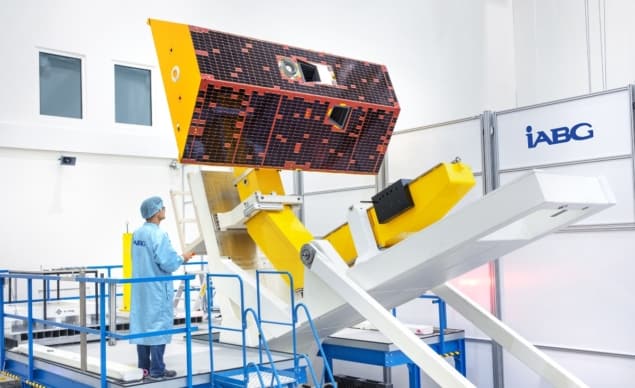
A laser ranging interferometer (LRI) has been used to measure changes as small as 200 pm in the distance between two Earth-orbiting spacecraft. The LRI monitors the distance between the GRACE Follow-On (GRACE-FO) satellites, which occupy the same orbit and are separated by about 220 km. By measuring such tiny changes in separation, scientists can map the gravitational field of the Earth to even higher resolution.
In 2002 the GRACE satellites were launched into orbits about 450 km above the surface of the Earth. For 15 years, microwave signals were sent back and forth between the spacecraft, measuring changes in their separation as small as a few microns.
Some of these changes are a result of variations in the local gravitational field of the Earth caused by the mountain ranges, tides and even the presence or absence of groundwater. When the GRACE mission ended in 2017, it had provided a wealth of information about the distribution of mass at or near the surface of the Earth.
Laser demonstration
GRACE Follow-On (GRACE-FO) is the next generation mission and was launched in May 2018 by NASA and the German Aerospace Center. While most measurements by GRACE-FO are being done using a similar microwave ranging system, the mission also aims to demonstrate the ability of an LRI to make even better measurements.
The LRI is created by equipping both GRACE-FO spacecraft with a neodymium:YAG laser that produces 25 mW of infrared light. Each satellite fires a laser beam at the other, and interferometry is used to measure the phase of the two beams – which will fluctuate when the distance between the spacecraft changes.

Weighing water from space
The LRI was operated continuously for 50 days as the spacecraft followed polar orbits around Earth, recording changes in their separation. These measurements agreed with those taken by the microwave ranging system, but with much less noise and uncertainty. Indeed, the LRI was able to detect changes in distance of about 200 pm occurring periodically on a timescale of about 1 s. This change in distance is roughly the same as the “van der Waal radius” of a typical atom – which defines the volume occupied by a single atom.
Before these latest results were announced, a similar laser technique was used over a distance of about 40 cm on board the LISA Pathfinder spacecraft. This is a testbed for the LISA gravitational-wave detector, which in the 2030s is expected to use lasers to measure the distances between three spacecraft separated by 2.5 million km.
The LRI results are described in Physical Review Letters, where the mission scientists say that their success with GRACE-FO suggests that it should be possible to use laser interferometry on the LISA mission.



